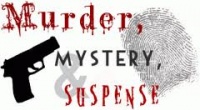Difference between revisions of "LGBTQ Mystery and Horror Writers"
| Line 64: | Line 64: | ||
* [[Derek Adams]] | * [[Derek Adams]] | ||
* [[Jacob Anderson-Minshall]] | * [[Jacob Anderson-Minshall]] | ||
| + | * [[Victor J. Banis]] | ||
* [[George Baxt]] | * [[George Baxt]] | ||
* [[Steve Berman]] | * [[Steve Berman]] | ||
Revision as of 15:17, 2 March 2019
There is a rich tradition of mystery and horror story writing by LGBTQ authors. Perhaps the best known of these authors is Clive Barker of Great Britain. Several of the writers have received the prestigious Lambda Literary Award for mystery writing.
Many of the books have been serialized into detective stories that are hugely popular around the world. Notable among these are the Donald Strachey series by U.S. writer Richard Lipez, which have been made into a popular television movie series starring gay actor Chad Allen. Similarly, Scotland's Val McDermid's series has been adapted for television under the name 'Wire in the Blood'.
The first published mystery book with a gay sleuth as the lead character is believed to be 'The Heart in Exile' (1953) by Hungarian author Adam Martin de Hegedus, writing under the pen name Rodney Garland. The first American murder mystery novel is believed to be 'The Gay Detective' (1961) by Lou Hogan (writing under the pen name Lou Rand).
Two transgender authors of note in this genre are Jacob Anderson-Minshall and Poppy Z. Brite, both of the United States.
What generally distinguishes an LGBTQ mystery or horror story from others is the inclusion of prominent LGBTQ characters in the storyline. Most often, this inclusion is in the form of the lead investigator, sleuth, detective, or hero(ine). Rarely does it involve singularly including the villain as the LGBTQ character in the writing.
These investigative characters are important in LGBTQ representation because they portray individuals who are pursuing the common good and putting other people’s interest ahead of their own. Nevertheless, there is quite often the case where this principal character is either looking for a same-sex relationship or falls into one as part of the plot line. Either of these features plays into the positive imagination of the reader and creates a positive normative portrayal of the LGBTQ character’s sexual orientation.
The success of the mystery and horror genre of writing is evident by the fact that many of these books and stories are printed in series form. Such series leave a cumulative impression on LGBTQ characterization, especially if the main character is LGBTQ. It is a credit to the writer when he or she can continue or increase the momentum of the character through multiple books.
We have identified LGBTQ mystery and horror writers from Canada, Great Britain, Australia, Norway, Mexico, Germany, Scotland, and the United States.
Australia
Canada
Germany
Great Britain
- Clive Barker
- Jeremy John Beadle
- Hilary Bonner
- Stella Duffy
- Drew Gummerson
- Richard House
- Tom Rob Smith
- Nancy Spain
- Steven B. Williams
Hungary
Mexico
Norway
Scotland
United States
- Derek Adams
- Jacob Anderson-Minshall
- Victor J. Banis
- George Baxt
- Steve Berman
- Poppy Z. Brite
- Rita Mae Brown
- Jessie Chandler
- Michael Craft
- Katherine V. Forrest
- Joseph Hansen
- Ellen Hart
- Drewey Wayne Gunn
- Greg Herren
- Patricia Highsmith
- Gordon Hoban
- Lou Hogan
- Peter Tuesday Hughes
- Renee James
- Lori L. Lake
- Richard Lipez
- Lee Lynch
- Alexandria Marzano-Lesvenich
- John Morgan Wilson
- Michael Nava
- John Preston
- Ryan Quinn
- Christopher Rice
- Jessica Amanda Salmonson
- J. Aaron Sanders
- Damian Serbu
- Carrie Smith
- Richard Stevenson
- Marshall Thornton
- Robert D. Zimmerman
See Also
- LGBTQ Romance Writers
- LGBTQ Science Fiction Writers
- LGBTQ Authors of Children and Teen Books
- LGBTQ Writers and Illustrators of Comic Books
- Pulitzer Prize Winning LGBTQ Authors and Poets
- Notable LGBTQ Playwrights
- Prominent Biographers Who are LGBTQ

